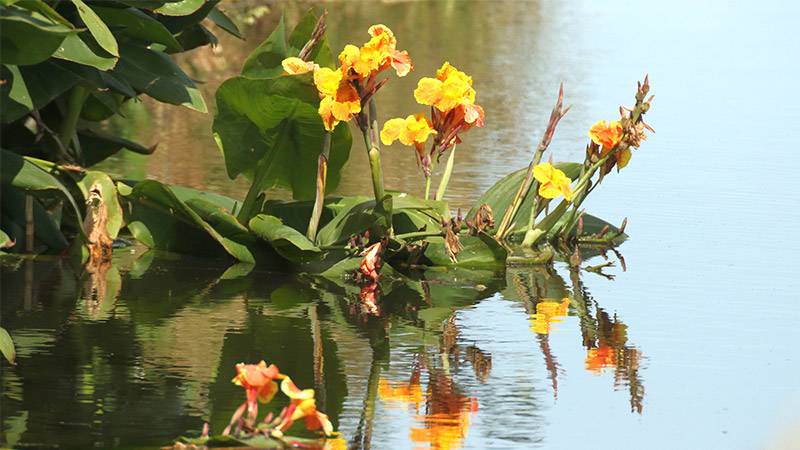In a groundbreaking study out of South Florida, researchers have discovered a novel approach to combatting water pollution—a pressing issue that plagues many urban areas. Utilizing inexpensive floating platforms, the team has successfully grown flowers on polluted waterways, achieving remarkable results in nutrient removal and offering a promising avenue for environmental cleanup and economic gain.The study, conducted over a 12-week period, revealed that these floating gardens were capable of extracting 52% more phosphorus and 36% more nitrogen than what is naturally removed by the water’s nitrogen cycle. This significant increase in nutrient uptake is a major breakthrough in efforts to clean up polluted water bodies, which suffer from excessive runoff of harmful chemicals from farms, urban lawns, and septic tanks. Such pollution contributes to the proliferation of harmful algae blooms, creating dead zones that threaten aquatic life and disrupt ecosystems.The research highlights the potential of using certain types of flowers, notably giant marigolds, which have proven to be especially effective in this process. These marigolds not only thrive on the floating rafts but also produce commercially viable blooms and stems, making them an attractive option for the cut-flower market—a multibillion-dollar industry. This dual benefit of environmental remediation and economic opportunity is particularly relevant in areas like Miami, the heart of the U.S. cut-flower trade, where the researchers are based.
 Inspired by traditional floating farm practices, including the Aztecs’ chinampas in Mexico and the Miccosukees’ tree island settlements in Florida, we tested the idea of growing cut flowers on floating rafts as a way to remove excess nutrients from waterways. Our hope was not only that the flowers would pay for themselves, but that they could provide jobs here in Miami, the center of the U.S. cut-flower trade.
Inspired by traditional floating farm practices, including the Aztecs’ chinampas in Mexico and the Miccosukees’ tree island settlements in Florida, we tested the idea of growing cut flowers on floating rafts as a way to remove excess nutrients from waterways. Our hope was not only that the flowers would pay for themselves, but that they could provide jobs here in Miami, the center of the U.S. cut-flower trade.
Inspired by traditional floating farm practices, such as the Aztecs’ chinampas in Mexico and the Miccosukees’ tree island settlements in Florida, the team explored the viability of growing cut flowers on rafts to remove excess nutrients from waterways. Their experiments used 4-by-6-foot mats made from polyethylene foam, known as Beemats, floating in outdoor tanks that mimicked the conditions of nearby polluted waterways. The tanks were stocked with seedlings of zinnias, sunflowers, and giant marigolds, which matured over the course of the study, improving the water quality significantly.According to The Conversation, the success of the initial trials led to further experiments in actual canals within the Coral Gables and Little River areas, where the platforms were anchored and tied to the shore for stability. These real-world applications confirmed the practicality and effectiveness of the method, with no need for alterations to the existing landscape.One intriguing aspect of the study is the focus on the giant marigolds’ adventitious roots—roots that grow from the plant’s stem rather than its base—which may contribute to the plants’ stability and nutrient uptake efficiency on the floating platforms. This finding opens the door to exploring other plant species with similar root systems for future projects.As urban areas continue to expand, the challenge of managing water pollution intensifies, making innovative solutions like floating flower farms increasingly vital. The research team’s work not only offers a viable method for addressing this environmental crisis but also provides a template for sustainable agriculture practices that could be replicated worldwide. The ongoing efforts to scale up this approach in South Florida serve as a testament to the potential global impact of such initiatives, promising a cleaner, greener future for our planet’s waterways.
More inspiring green news similar to this:


